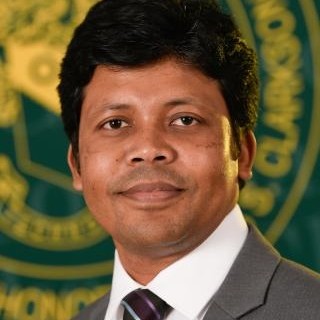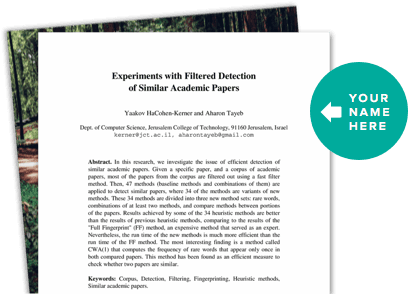About This Project
The objective is to investigate the dominant transport mechanisms affecting in-stream microplastics (MPs, ≤ 5 mm) dynamics, including retention and transport (R&T) rates. The research will be conducted through lab experiments by leveraging the existing research infrastructure. A robust formula will be developed to compute the R&T of MPs under various process regimes and different physicochemical properties of MPs to quantify/model MPs robustly in riverine systems.
Ask the Scientists
Join The DiscussionWhat is the context of this research?
The ubiquity of microplastics (MPs; size ≤ 5 mm) in surface waters and potential implications for public health calls for determination of the major controls, understanding of the associated mechanisms, and formulation of under-friendly prediction tools for management. It is commonly assumed that the dynamics of MPs in riverine systems behave similarly to the natural particles such as sediments; however, the MPs dynamics cannot be quantified using the same formulas as sediment particles. Hence, distinct formulas are required to quantify the dynamics of MPs, such as transport and retention rates, which differ from sediment particles. This necessitates determining explicit formulas for MPs transport and retention rates by varying MP characteristics, bed substrates, and river hydrodynamics.
What is the significance of this project?
The research will be conducted through controlled lab experiments by leveraging the existing research infrastructure at Clarkson University and highly promising preliminary results/findings. The realistic data, relationships, and physical characteristics on transport and retention rates of MPs from this project can be utilized to develop mechanistic models to robustly characterize and quantify MPs in riverine systems. It will lead to transformative foundational insights and new knowledge by determining the dominant mechanism of MPs' dynamics and transport of MPs into the receiving streams and rivers.
What are the goals of the project?
The specific research objective is to investigate the dominant transport mechanisms and rates affecting in-stream MPs dynamics, including retention and transport. The project will evaluate a hypothesis that the river flow characteristics and physicochemical properties of MPs will significantly influence their in-stream retention and transport dynamics. A robust formula will be developed to compute the retention and transport characteristics of MPs under various process regimes (e.g., flow regimes, turbulence) and different physicochemical properties (e.g., size, polymer type) of MPs.
Budget
This project builds upon Clarkson University's established research portfolio on microplastics. Currently, one PhD student, supported by an external fellowship, is leading controlled lab experiments. However, for the successful execution of the experiments, at least two students are required. Hence, the grant support will facilitate the inclusion of one undergraduate student for the entire summer period ($8,400, 14 weeks, 40 hrs/week, $15.0/hr). Since this project lacks external financial backing, additional funds ($1,200) would enable the procurement of pre-production microplastics essential for laboratory experiments.
Endorsed by
 Project Timeline
Project Timeline
The main challenge lies in developing and executing controlled experimental scenarios and gathering observed data. From May to July, graduate/undergraduate students, and Prof. Baki will be engaged in this task.
Subsequently, the collected measurement data will undergo analysis and processing to develop robust formulations for microplastics in turbulent flow.
Finally, the outcomes of this project will be documented in the form of reports and publications.
May 06, 2024
Project Launched
Jul 13, 2024
Conduct experimental scenarios
Aug 13, 2024
Complete data processing, analysis, and develop robust formulas.
Aug 28, 2024
Focus on report writing and preparation for publication
Meet the Team
Abul Baki
Dr. Abul Baki is an assistant professor in the Department of Civil and Environmental Engineering at Clarkson University. His interdisciplinary research has several cross-cutting themes (e.g., ecohydraulics, riverine microplastics pollution and dynamics, and sediment transport to address the critical challenges in the aquatic ecosystems). He is leading a Team Science Project at Clarkson University focusing on riverine microplastic pollution and dynamics since 2021.
Google Scholar link:
Lab Notes
Nothing posted yet.
Additional Information
Building upon the established foundation of research on MPs at Clarkson University, a comprehensive set of tasks will be implemented to successfully achieve the research objective outlined in this study. Task 1: Biofilm formation to prepare MPs samples. Three representative types of pre-production MPs (PE, PP, and PS) representing five different sizes of particle (0.5, 1, 3, 4, and 5 mm) and three different shapes (circular, disk, and fragment) will be placed into three different types of water (e.g., river water from a local river, untreated sewer water from the city water treatment plant, and clean water from CU water supply systems). Task 2. Particle tracking technique. Each MP individually will track from the recording videos (GoPro camera) using our in-house Python code—recently developed in one of our pilot projects—based on deep-learning technique (DeepSORT) to estimate MPs’ settling velocity (W) in turbulent flow. Task 3. Laboratory experiments for MPs transport and retention rates. In the novel experimental setup in the above Task 1, the released Biofilm-coated MPs (~ 10 milligrams) from the upstream at different water depth from the surface will be observed at different downstream sections of the flume using GoPro camera to track the transport and retention of MP particles along the flow direction. Task 4. Dimensionless relationships for MPs transport and retention rates. A robust formula will be developed to compute the transport and retention rates of MPs (e.g., advection, dispersion, Einstein number, Shields parameter, mobility number, shear Reynolds number, TKE) under various process regimes (e.g., flow regimes, turbulence) and different physicochemical properties (e.g., size, polymer type) of MPs.
Project Backers
- 0Backers
- 0%Funded
- $0Total Donations
- $0Average Donation


